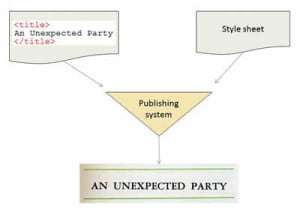3 Tips to Conquer Your Fear of XML

Technical communicators often cringe when they hear talk of using XML to write their content. Despite all of its benefits, XML may be perceived to be overwhelmingly technical for writers who are used to authoring their content in MSWord. If you are one of those writers who fear XML, keep reading. We’ve provided three tips to help you better understand XML and ease your anxiety:
Don’t overcomplicate it.
Every document is made up of parts. Even a document as simple as a novel has parts: a title and paragraphs. XML is simply a way to label those identifiable parts of a document by tagging where the part begins and ends – and keep those labels stored in the document itself.

Ignore the formatting.
A basic principle of XML is “the separation of content from formatting”. Using our novel example, the XML tag for the <title> simply tells programs that “This is a title”; it does not say, “Display the title in all capital letters surrounded by green horizontal rules above and below”. This formatting information is provided separately in a style sheet. Styles get applied at publishing time to the individual parts of the document. This principle of “separation of content from formatting” is key to the advantages that you can gain from using XML.

Use tools that can help.
Some writers fear using tags, but that fear can be alleviated by using a good XML editing tool and multilingual content management system (CMS) to manage your XML in any language. These tools assist writers with tagging by providing easier ways to apply tags rather than typing a bunch of angle brackets. They can also display your XML content in a styled preview to make it easier to read and edit. Additionally, these tools can ensure that your XML is valid. A CMS implementation using XML content can also boost the reuse of your content, saving you editorial and publishing time as well as translation costs.
Call us at 717-764-9720 or visit our website for help in getting started with your content management strategy.